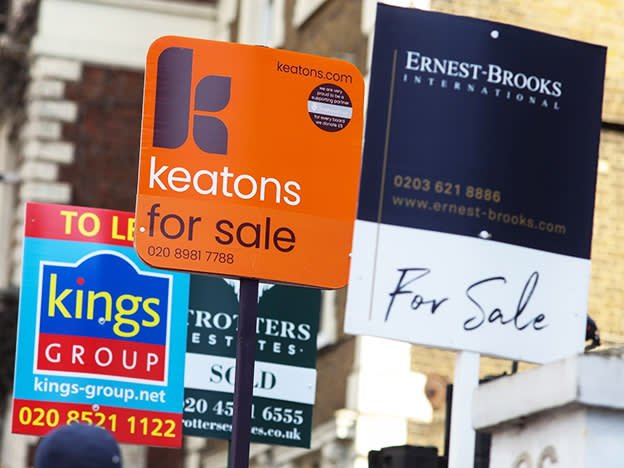- Bank of England rate cut was preceded by mortgage costs falling
- Further borrowing cost cuts will be slow but impactful
- Long-term factors affecting the housing market have not shifted, however
The news for which would-be homeowners, or those looking to make a move, were hoping finally arrived last week, when the Bank of England (BoE) cut the base rate to 5 per cent. A dark cloud has hung over the property market ever since Liz Truss and Kwasi Kwarteng’s ill-fated afternoon at the dispatch box, with rising mortgage rates and crippling inflation hitting affordability and sending price growth into reverse. But real wages are now rising, the economy is improving and falling base rates should lower borrowing costs. Is this all enough to kickstart the property market?
Some evidence has appeared already. Mortgages are priced off swap rates, rather than the base rate, and the former have already been pricing in a cut by the central bank. Figures from Moneyfacts, a data provider, show the average rate on a two-year fix had dropped to 5.77 per cent at the start of August, down from 5.95 per cent a month earlier. In the same period, Nationwide data showed house prices rose 0.3 per cent, the third month in a row, and above the 0.1 per cent rise that had been expected, albeit transaction volumes were fairly similar month on month.
However, the early pricing moves by lenders mean that any subsequent change in mortgage rates and property market sentiment will be gradual. Moneyfacts’ Rachel Springall says it could take a few more weeks for things to really accelerate. “I still expect mortgage rates to drop further. At the moment there are only two lenders with sub-4 per cent fixed-term deals and more will want to be competitive,” she adds.
Clearly, the market is also still a long way from where it was two years ago. In August 2022, before the ‘mini-Budget’, the average two-year fixed-rate deal cost just 3.95 per cent – nearly 2 percentage points cheaper than the current level. Similarly, Nationwide chief economist Robert Gardner notes that transactions are still 10 per cent lower than before the pandemic – the last ‘normal’ period for the market when it was not affected by the spike in gilt yields, the pandemic-driven rush for space or a stamp duty holiday.
Nonetheless, analysts are adjusting expectations based on general economic positivity and the arrival of base rate cuts. Capital Economics’ UK team suggests prices will remain flat for the rest of this year but rise 5 per cent in 2025 and another 4 per cent in 2026. They say: “Our forecast is that Bank Rate will be lowered by more than investors anticipate and the average mortgage rate could fall from 4.8 per cent now to a little below 4 per cent by the end of 2025. That would reinvigorate demand by making buying affordable again for many who are currently priced out.”
Aneisha Beveridge, head of research at Hamptons, agrees and says there is scope for mortgage rate falls to boost housing market sentiment further. She says a “feel good factor” from the change in government could also increase activity. “Mortgage rates have fallen quicker than we anticipated, while income growth has stayed high, improving the affordability picture for buyers. We also expect transaction numbers in 2024 to rise 10 per cent compared with last year, with even more moves happening next year.”
Don’t get carried away
However, there are still longer-term factors at play affecting both supply and demand, which will temper house prices, and keep transactions and prices below the pandemic peak. In May, Savills suggested a more tepid growth figure of 3.5 per cent. Lucian Cook, director of residential research, says the estate agent is sticking with this forecast despite recent developments. “We aren’t getting carried away,” he adds.
Savills thinks that house prices remained too resilient throughout the cost of living crisis and mortgage market chaos – the average house is only 2.8 per cent cheaper now than during the summer of 2022.
This means longer-term affordability issues have not gone away. This is, as expected, most acute in London and the south-east, where house price growth is forecast to be 2 per cent in 2025, versus the national average of 3.5 per cent.
In addition, longer-term forecasts for house prices need to factor in changes in supply. Should Labour actually achieve its housebuilding target of 300,000 new homes every year, population-growth-driven price increases could temper. However, it is difficult to suggest how, if and when this would take place given the regional nature of house prices. Then there is the difficulty in actually building that many homes, as Robin Hardy covers here.
The housing market slump once feared when the BoE rate hit 5.25 per cent in August 2023 did not materialise. However, the once automatic prediction of ‘house prices always go up’ may not ring true without fundamental changes to affordability and plans to significantly boost supply.



